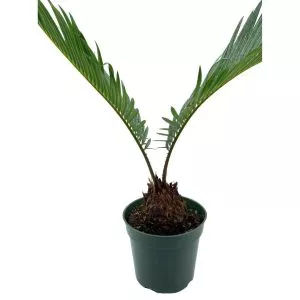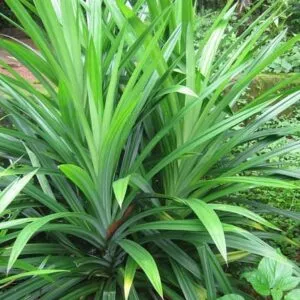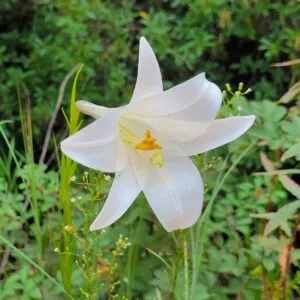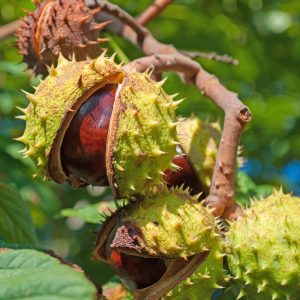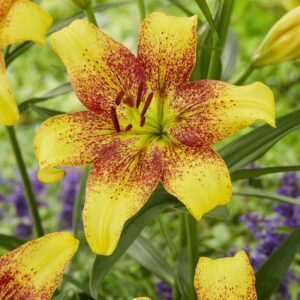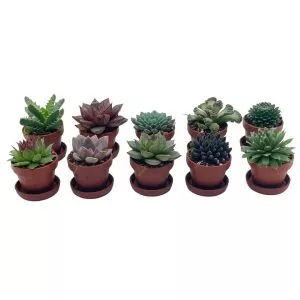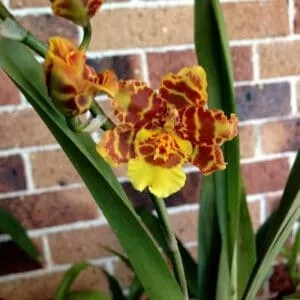No products in the cart.
Table of Contents
What a spectacular sight to behold, the Medinilla Lalique just as beautiful as the Medinilla magnifica. Do you agree?
As lovely as both these tropical plants are caring for them, it is the same and presents your home or garden with tropical beauty. The truth is that both these rare plants look similar with some slight differences.
What is The Medinilla Alata Lalique?
The Medinilla goes by many names, as some gardeners call it rose grape, and showy Medinilla to the pink lantern plant. The Lalique has lavender-blue flower bracts with white blooms with burgundy calyxes and flower stems looking like a chandelier.
The broadleaf evergreen once flowering displays red berries with a deep magenta tint. You can find these plants carrying blossoms in the winter or summer grown in a greenhouse. You see the tropical plant growing in the Celebes Sea area dividing the Philippines from Indonesia.
Some botanists also say that the Lalique is the former Medinilla crassata, but regardless of the origin, this remains a stunning plant that will bring you joy.
Medinilla Plant Care

No matter what Medinilla plants you have, taking care of them is the same. Here you can find a short introduction to care for your tropical plant.
Species: Medinilla alata
Common Name: Medinilla, rose grape, showy Medinilla, Philippine orchid, pink lantern plant
Plant Type: Broadleaf evergreen
Native to: South Asia
Blooms: Lavender blue bracts with white flowers
Maximum Size: Two to four feet tall
Watering Requirements: Allow soil to dry between watering
Light Requirements: Part shade
Preferred Humidity: 50% and higher
Preferred Temperature: Temperature above 60°F
Soil or Potting Medium: Well-draining loamy soil
Fertilizer: Liquid compost
Propagation Method: Seed and root cuttings
Vulnerability: Mealybugs and spider mites
Toxicity: Non-toxic
It is excellent to know that your tropical shrub is grown as an indoor plant and is non-toxic. So the kitty can go exploring without concerns.
You can grow your white to pink flowers in the home, on the patio, greenhouse, or outside in the garden.
In stock In stock In stock In stock
$10.00
Sold By:
Beauties & Beasts
Succulent Amaryllis -Orange- Indoor Outdoor
Rated 4.83 out of 5 based on 24 customer ratings00
Sold By:
Beauties & Beasts
$24.99
Sold By:
BubbleBlooms
$29.99Fern Assortment, Foliage set, fishtail, Heart-Fern, Largeleaf maidenhair, Parsley, premium succulent collection, in 2 inch pots, plant gift
Rated 4.81 out of 5 based on 279 customer ratings00
Sold By:
BubbleBlooms
$14.99
Sold By:
BubbleBlooms
Ferocactus emoryi, Star Shaped Emory’s barrel cactus, Coville’s barrel cactus, 5-point Cactus, in 4 inch pot, well rooted healthy starter
Rated 4.81 out of 5 based on 279 customer ratings03
Sold By:
BubbleBlooms
$10.00
Sold By:
JLP farms TN
5 Wild Geranium Bare Root
Only 45 available and it’s in 1 people’s basket Rated 4.85 out of 5 based on 602 customer ratings19
Sold By:
JLP farms TN
Best Potting Mix
When it comes to your chandelier tree growing in the wild, it can grow as an epiphytic orchid even if it does not belong to the same family.
Unlike your orchid, it can grow on a host plant, but it does not absorb moisture and nutrients from the atmosphere but has succulent green leaves that hold water.
Thus providing it with the proper ground to grow is essential and preferably needs to be well-drained soil.
Another notable thing is growing your Medinilla plants as outdoor plants in containers. They also do well. Still, it is essential to use free-draining soil to prevent leaf drop and root rot.
A fantastic soil you can use is an orchid potting mix with some peat moss mixed in to make it slightly acidic.
Ideal Lighting

It loves the morning to late afternoon sun in warmer months when grown as an outdoor plant. But take care the huge leaves can get sunburned fast and providing them with indirect light is best.
Growing indoors helps to provide your flowering plant in a bright room with direct sunlight in the morning with shade in the afternoon.
Watering
When you keep your chandelier tree indoors, it is best to keep it away from drafts entering through windows and doors. A draft will increase water loss and lead to drooping clusters and leaf drops.
The best is to leave the ground dry before you water your plant to help prevent root diseases. You can water your tropical cutie less in the winter months and more during the growing season.
Temperature & Humidity

One thing your exotic plant loves is high humidity with warm temperatures. Okay, we are not saying they thrive in triple-digit warmth but providing an ideal temperature of 60°F and above helps.
When temperatures drop below this, the leaves turn yellow, with leaves dropping. Still, growing as an outdoor plant is possible in dry conditions.
Temperatures above 60°F can help stimulate bud formation during its dormancy in winter. But take care if the temperatures drop as your trees are not frost-hardy.
Further, similar to the Medinilla magnifica your Lalique thrives in humid conditions with enough air circulation, and some misting with enough light helps.
Or you can place a humidity tray underneath your plant.
Fertilizer Provision
Your plant is not a heavy feeder, as excessive nitrogen causes lush foliage without blossoms. So, you can feed your exotic plant a liquid compost or a high-phosphorous fertilizer monthly in the growing season.
In stock In stock In stock
$29.99
Sold By:
BubbleBlooms
Queen Sago Palm, Cycas rumphii, in a 4 inch pot (Cycas revoluta)
Rated 4.81 out of 5 based on 279 customer ratings00
Sold By:
BubbleBlooms
Free Shipping
$48.00
Sold By:
Andygarden2023
pandan leaves tree – full roots- free ship
Sold By:
Andygarden2023
$11.99
Sold By:
Succulent Oasis
Cactus Plant Medium Mammillaria Eleganz. A beautiful, geometric design of spines is very unique.
Rated 4.84 out of 5 based on 352 customer ratings02
Sold By:
Succulent Oasis
Propagating Medinilla
Okay, if you have a stocky specimen of your Medinilla, you can root some cuttings to increase your plant collection.
Using the cuttings is easier when placed in damp sphagnum moss. The recommended cutting should have at least two leaves but remove the other leaves.
You can place the tips in a rooting hormone to encourage rooting. Or you can do this using the seed after it flowers and bears fruit clusters. Out of one fruit, you can harvest over 2000 seeds.
Even better, if you have ripe fruit, the seeds are ready to germinate. First, you can crush the berries to remove the seed from the gel. Then, clean the seed with water daily to remove the tannins.
Plant your seed in the sterile potting mix on the surface and cover it with some moist sphagnum moss. Keep the seedlings moist until they germinate, taking up to a month.
USDA Growth Zone
Your flower can grow in a humid environment outside the southernmost parts of the United States.
While it can tolerate mild temperature drops, some gardeners reported their foliage recovers after a freezing temperature.
But it will be better to overwinter your greenery inside when you live in zones ten or eleven.
In stock In stock In stock In stock
Free Shipping
$8.98
Sold By:
CZ Grain
gigantic pumpkin seeds
Rated 4.60 out of 5 based on 156 customer ratings00
Sold By:
CZ Grain
Free Shipping
$3.50 – $8.00
Sold By:
Chill Hill Farms
Philippine Lily | Lilium Philippinese | Florida Grown
Sold By:
Chill Hill Farms
Free Shipping
$8.26
Sold By:
CZ Grain
2 Horse Chestnut Seeds for Planting – Amazing and Exotic Fruit Tree
Only 890 available and it’s in 1 people’s basket Rated 4.60 out of 5 based on 156 customer ratings01
Sold By:
CZ Grain
$10.00
Sold By:
Smoot's Farm
Lilium Asiatic Lily Golden Stone Yellow and Red Flower 3 bulbs
Rated 4.89 out of 5 based on 27 customer ratings00
Sold By:
Smoot's Farm
Potting and Pruning
When your Medinilla grows in a pot, the potting medium deteriorates. If the ground remains moist more than a day after you water them, you need to re-pot it with some fresh dirt.
You can also keep them in a manageable size indoors with a prune down the branches after blooming. Doing this also allows for new growth.
Medinilla Varieties
Rose Grape
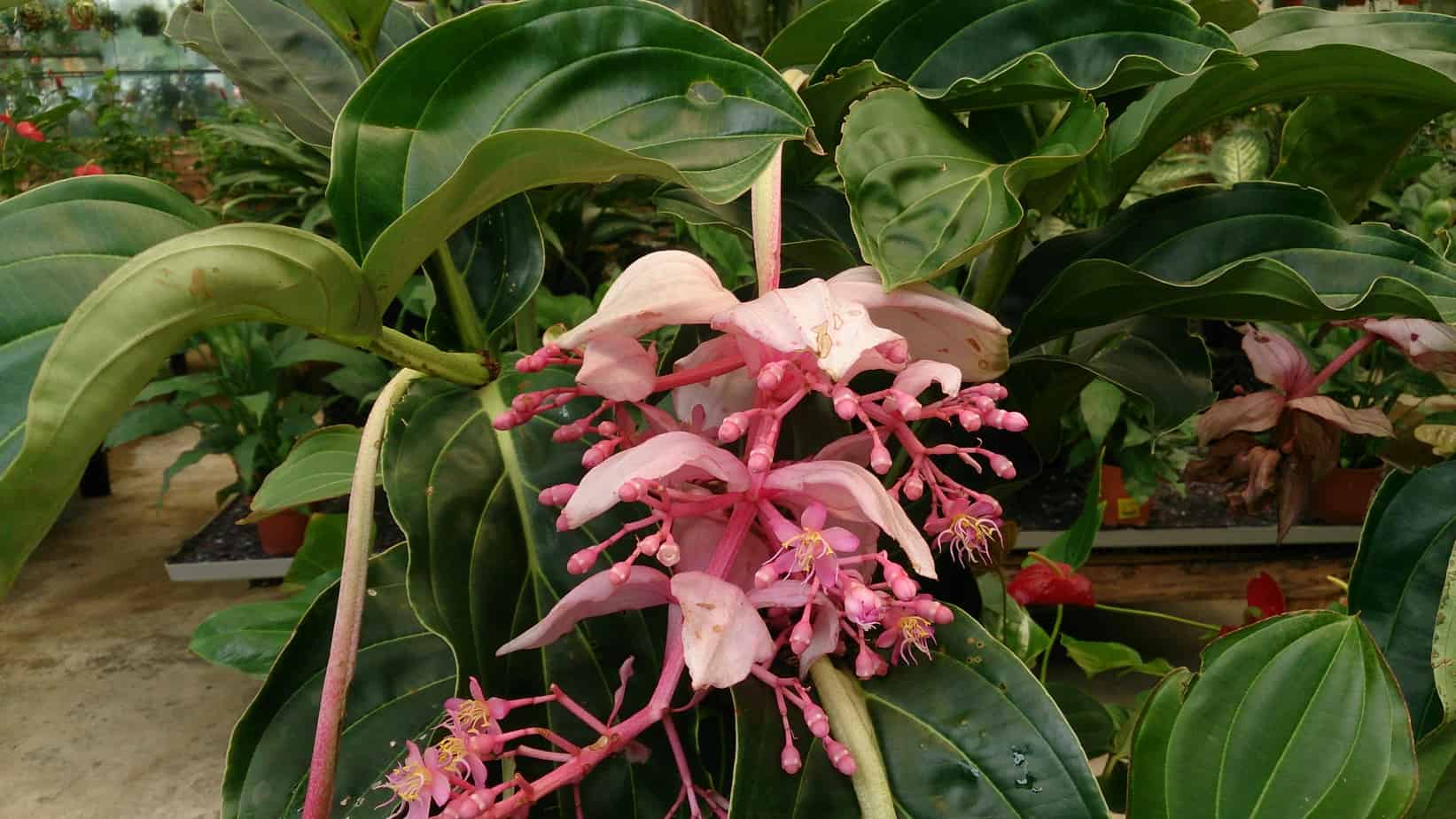
This is an excellent choice for beginner gardeners as it thrives in the cool evening climates grown outside.
Crimson

The flowering is gorgeous, grown in a pot with glossy red blooms.
Coral

The succulent is a smaller variety that grows up to 12 inches tall.
Pink Lanter Plant

The pink displayed in the flowering season is ideal on the patio or garden. The vegetation grows dark blueberries.
In stock In stock In stock Only 1 left in stock
$12.99
Sold By:
BubbleBlooms
Watermelon Pilea Cadierei, Aluminum Plant, 4 inch
Rated 4.81 out of 5 based on 279 customer ratings00
Sold By:
BubbleBlooms
$49.99
Sold By:
BubbleBlooms
Teacup Succulent Assortment, 10 different plants, in 1 inch pots with saucers, super cute, best plant gift, party favors, variety bundle
Rated 4.81 out of 5 based on 279 customer ratings00
Sold By:
BubbleBlooms
Free Shipping
$39.99
Sold By:
Aloha Hawaii Orchids
$44.99Orchid Pacific Passage ‘Peach Cobbler’ 4” live plants from Hawaii
Rated 4.65 out of 5 based on 268 customer ratings01
Sold By:
Aloha Hawaii Orchids
Sold By:
Physis Plants
Madagascar Jewel, Euphorbia leuconeura, succulent shrub, in a 4-inch pot
Only 1 available and it’s in 2 people’s basket Rated 5.00 out of 5 based on 22 customer ratings13
Sold By:
Physis Plants
Medinilla ‘Lalique Plant Diseases & Pests
As with most houseplants, your Lalique can have some concerns you need to keep an eye on:
- Yellow leaves can be from too little sunlight or underwatering, and the ground is not rich in nutrients. Yet, you can report them and provide them with some fertilizer to fix the problem.
- Petals dropping before the flowering season can result from too dry ground. Another concern is that it is not getting enough light or the humidity is too low.
- If the leaves and stems look limp, you need to water your foliage as it can also result from low humidity.
- Brown to black leaf tips can result from overwatering, or when outdoors, the frost nipped it a bit. Also, check the humidity and mist the leaves daily.
- Pests that can cause concerns are mealybugs and removed with isopropyl alcohol, while spider mites can removed with a wash.
Frequently Asked Questions
Before early mid-spring, keep the pot in a bright place but not in direct light from the sun. While in winter, keep the area as bright as possible in temperatures above 60°F to trigger new growth of the buds.
Your Medinilla can take up to three years before it matures for flowering. So, sit back enjoy this foliage grow.
While it has epiphytic behavior as the orchid, it is not part of the same family. Neither does it get its nutrients from the host it grows on.
Luckily, the Medinilla is not a rare species found globally at different gardening centers. Yet, you need not head out of the house as Plantly has this gorgeous flower right here for you to buy.
Whether you want to buy, sell, or simply reach out to other plant enthusiasts, Plantly is the right place to be!





